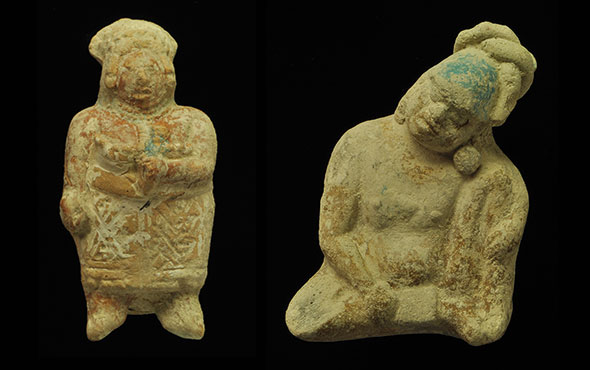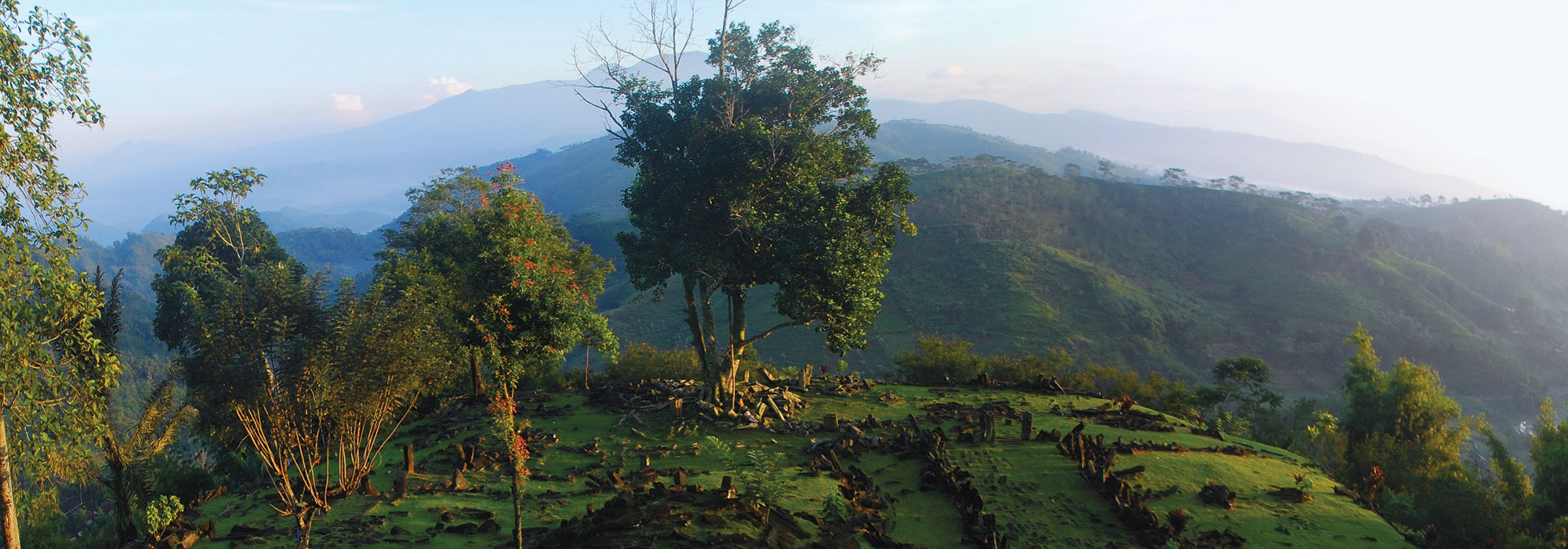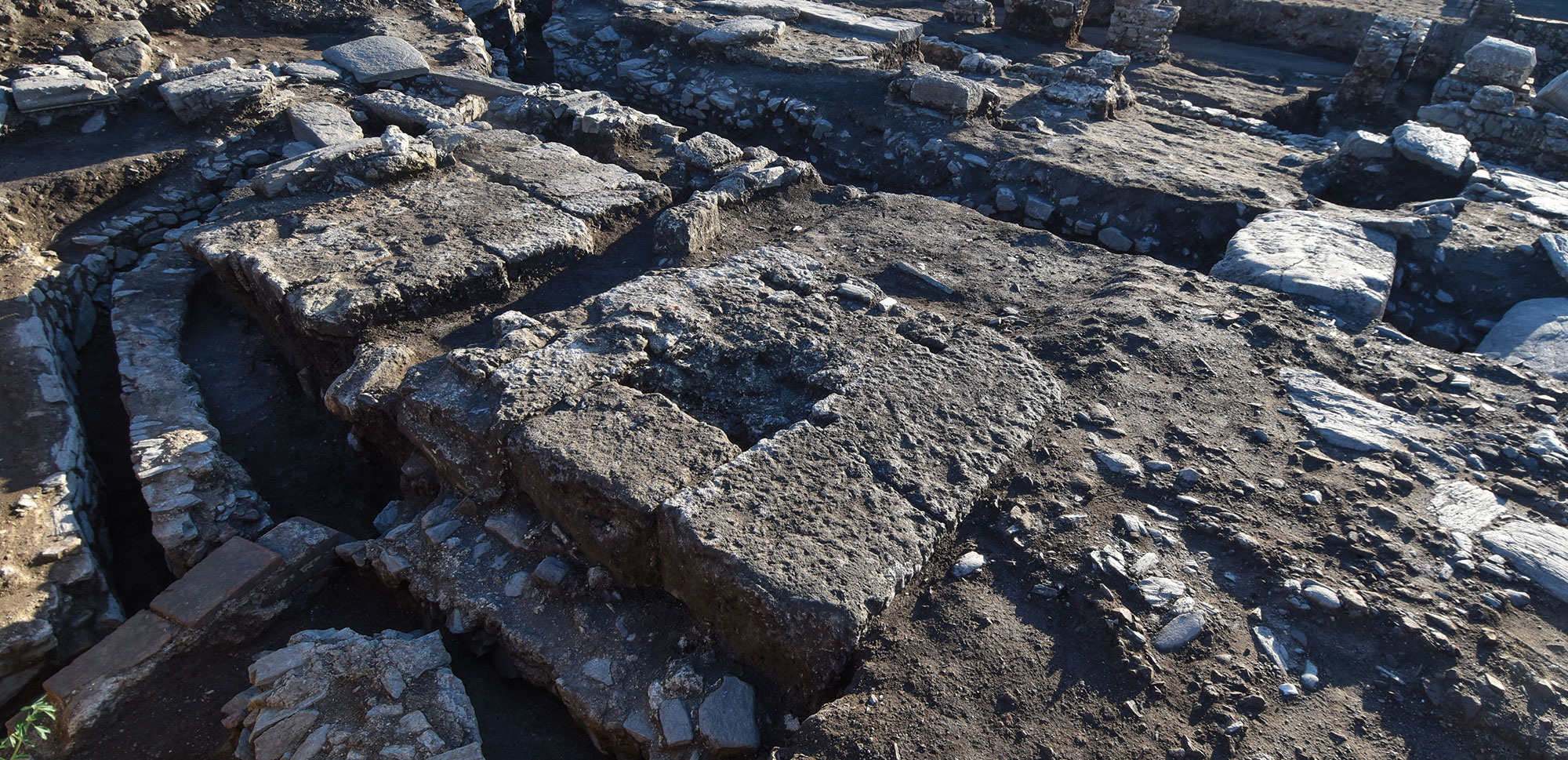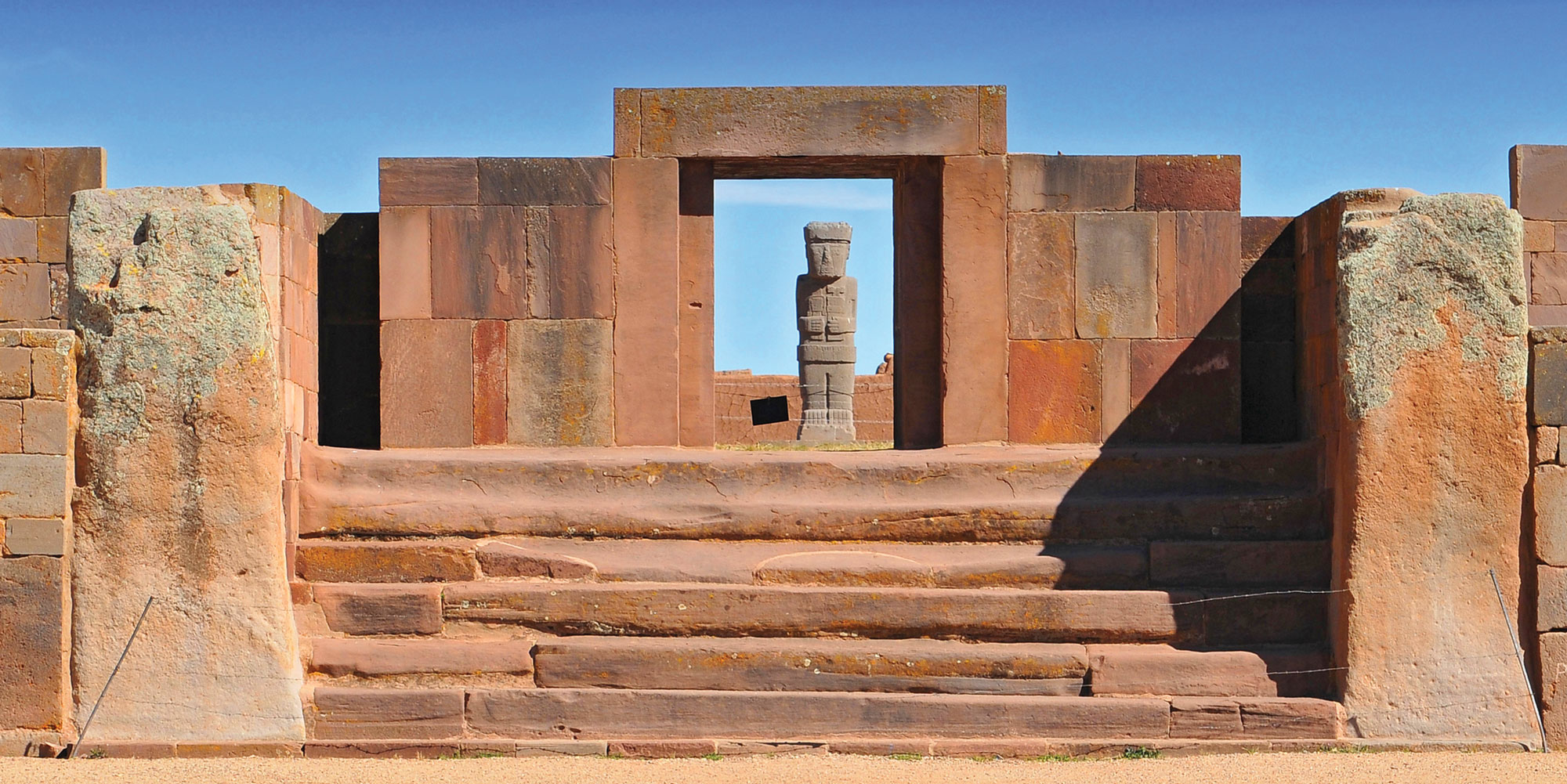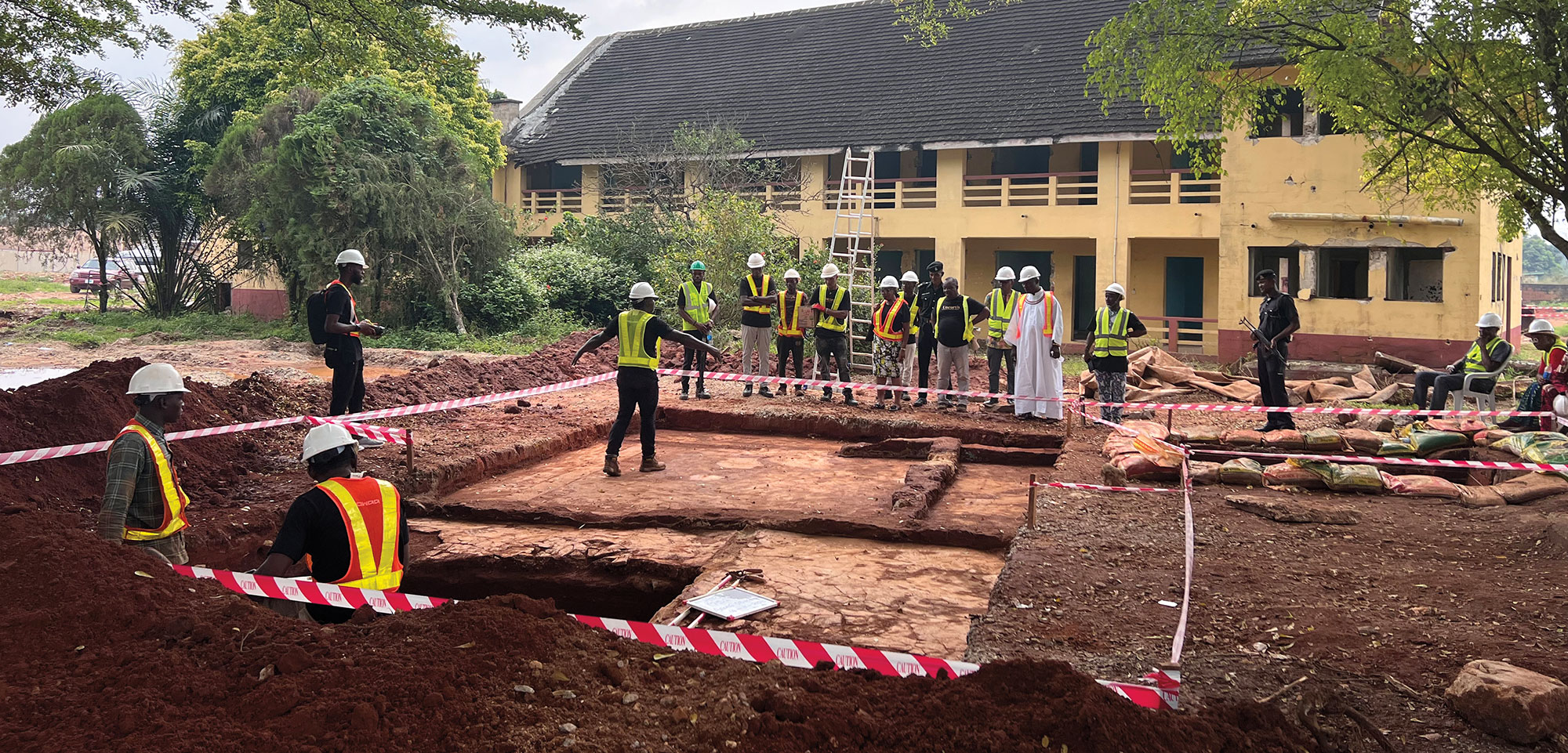Archaeologist Marta Perea excavates a deposit near the top of a temple at the site of Ucanal in northern Guatemala. The deposit included the remains of four members of Maya royalty, 1,500 fragments of personal ornaments, and 10,000 marine shell beads. The deposit was related to a fire ceremony conducted by Papmalil, king of the K’anwitznal Kingdom, at the beginning of the ninth century A.D.
Pieces of greenstone (above) and obsidian (top) from a Maya funeral mask were discovered in a deposit





